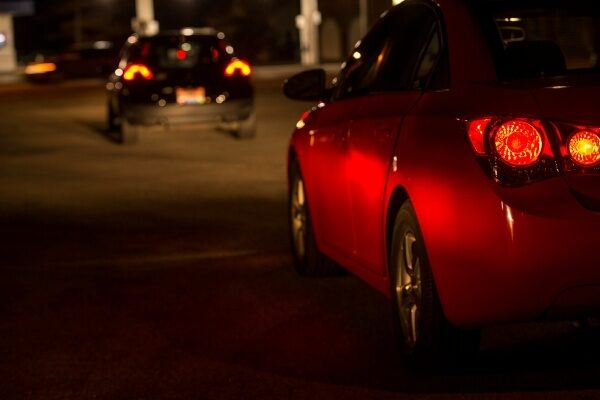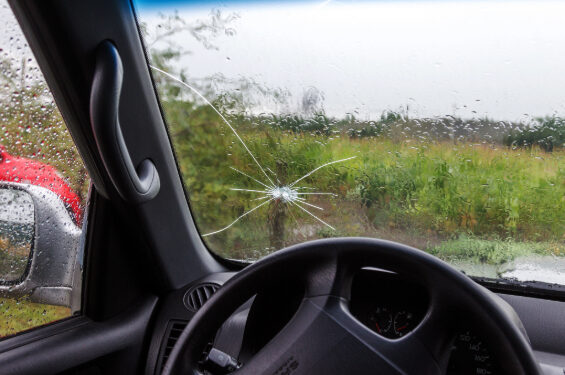
Working headlights are essential for driving any car safely, but they occasionally go out. Knowing how to change a headlight and what to look for when the front of your car goes dark can help you quickly remedy the problem.
Check if the headlight bulb is out
Determining the cause of a headlight issue begins simply by observing. First, put your headlights on to see if it’s just one light that’s out. If one is out, 90% of the time the light will go back on by simply replacing the bulb, says Emilio Zullo, owner and technician at E & L Automotive, in Ossining, N.Y. One quick test, if you don’t have a bulb handy or if you are out on the road when you notice the headlight issue, is to pull over and tap the light with your fist, which sometimes will make it go on, he says.
“If it goes on, that means the filament is burnt out,” Zullo says. “When you hit it, you’re shaking the filament and, if this makes contact, it actually lights up.” This can at least enable you to make it to an area where you can have the light repaired, he adds.
How to change a headlight bulb in 5 steps
Check your owner’s manual for details on how to change the headlight in your specific vehicle, as well as what headlight bulb to purchase.
Step 1. Power your car down
To ensure safety, turn off your car and take the keys out of the ignition.
Step 2. Open engine compartment
Pop your car’s hood and locate the headlight holder, near the front of the car.
Step 3. Disconnect the headlight bulb power wires
There are usually three wires attached to the base of the lightbulb. Push down the clip or cap holding them in place.
Step 4. Unscrew the old headlight
Every car is different, Zullo cautions. “Some cars you can get right to the bulb, but with some cars you can’t,” he says. Sometimes the battery or the air filter housing is in the way and sometimes you have to take the inner fender out and get behind it.
However, if you can open the headlight, it’s then just a matter of changing the halogen bulb. This means seeing how the bulb is locked in and carefully unlocking it. If you break the clips that are used here, though, you’ll need to take out the whole headlight, Zullo warns. “So you have to see how it’s hooked up, gently take it apart and then you have to reverse the procedure going back together without putting your fingers on the glass of the bulb,” he says.
Step 5. Screw in the new headlight bulb
Gently screw in the new bulb without touching the glass of the bulb; oil and dirt on your hands can cause the bulb to burst once it heats up. Close the hood of your car. With the new bulb in place, your headlights should once again be as good as new, and you can once again enjoy driving your car day or night.
Most times, changing a headlight is straightforward and doesn’t require taking your car to a mechanic. Check out other DIY car maintenance projects anyone can do.
If your replacement headlight bulb doesn’t work
Ultimately, if you replace a bulb and that doesn’t work, then you have to test the fuses and the wiring. “If you have power going to the fuses and no power going to your light, you’re having a wiring problem,” Zullo says. “It could be that a wire broke somewhere, got pinched or something like that.”
Another thing to consider if you recently changed a halogen bulb is whether the replacement bulb was appropriate for your plug. Zullo points out that halogen bulbs today run very hot, and some car parts stores sell brighter or colored replacements over the counter that are touted as better for visibility but that run even hotter. “So what happens with a stock OEM plug that the car came with from the factory is that it can’t handle this extra wattage,” he says. “It starts to melt, and then it makes a bad connection and your light goes out.” At that point you can’t even put a new bulb in, you have to change the whole light socket, Zullo says.
What causes car headlights to go out?
1. Old age
The most common culprit for a burned-out light is age, says Zullo. “You could be driving and not notice that one of your headlights is out, and then, since the other one is the same age, within weeks that one might just go bad, too,” he says. Suddenly the problem becomes scarily apparent.
2. Extreme cold and heat
Besides age, extreme cold or heat can also cause headlights to burn out. The changes in temperature can impact the lightbulb filament, which is very delicate.
3. Oxidation
With newer halogen bulbs, another cause of dimming lights can be oxidation of the plastic housing, causing it to appear white or yellowish, Zullo says. This diminishes the beam of light that helps drivers to see the dark road ahead, he says. “In that case, you would have to replace the whole headlight assembly,” he adds.
4. Cracks in bulb housing
In addition, any cracks in the housing can cause halogen bulbs to burn out because these can’t take any moisture. “So you could put a new bulb in there and within a day or two it will blow out because of the humidity and the wetness,” Zullo says. “Also, these bulbs cannot be touched by your fingers; if you’re installing it, you have to use rubber gloves because if you put your finger on the bulb the salt from your sweat will burn that bulb right out.”
Have a safety plan in case your headlight burns out while driving. Make sure to practice safe driving when you’re on the road.



